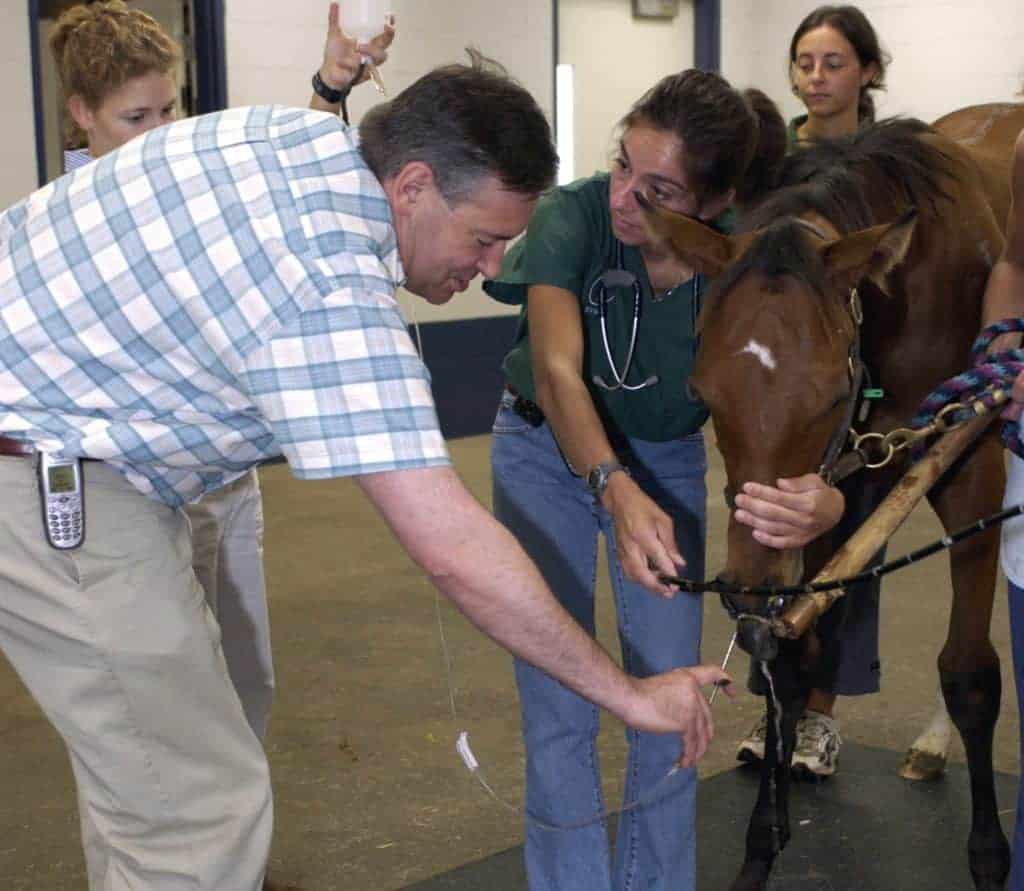: Only an Opportunist?
S. zooepidemicus is frequently isolated in the respiratory tract of weanling and yearling horses.
S. zooepidemicus is frequently isolated in the respiratory tract of weanling and yearling horses.
Confirmed diseases include contagious equine metritis, strangles, EHV, influenza, and more.

A combination of inhaled corticosteroids and environmental antigen avoidance helped horses with heaves.

Only performing bronchoalveolar lavage in a single lung could lead to missed diagnoses, one veterinarian says.

Learn about a yearlong study using corticosteroids and antigen avoidance to treat recurrent airway obstruction (RAO, heaves) from Dr. Mathilde Leclere.

International horse movement and climate changes could contribute to disease risk, one vet says.

Researchers say not all biosecurity protocols owners use will protect horses from infectious diseases.
All of this year’s Kentucky Derby starters will receive furosemide, designed to prevent EIPH.

Learn about the potential benefits of soaking your horse’s hay, methods for soaking, and what to do with the remaining liquid (hint: don’t use it to water plants) in this information packed fact sheet.

Researchers found a flu inhibitor that could help horses with influenza recover more quickly.
Reported diseases include contagious equine metritis, strangles, influenza, equine herpesvirus, and more.

Research on RAO, or heaves, in horses could help in finding solutions for asthma in humans.
The Grayson-Jockey Club Research Foundation approved funding of 12 new projects in 2013.

Equine respiratory system dysfunction is an important cause of exercise intolerance and poor performance in horses.

Ultrasonography could be a valuable adjunct tool for diagnosing equine arytenoid chondritis.

Multiple horses exhibited clinical signs of influenza before testing positive for the disease.
Stay on top of the most recent Horse Health news with
"*" indicates required fields